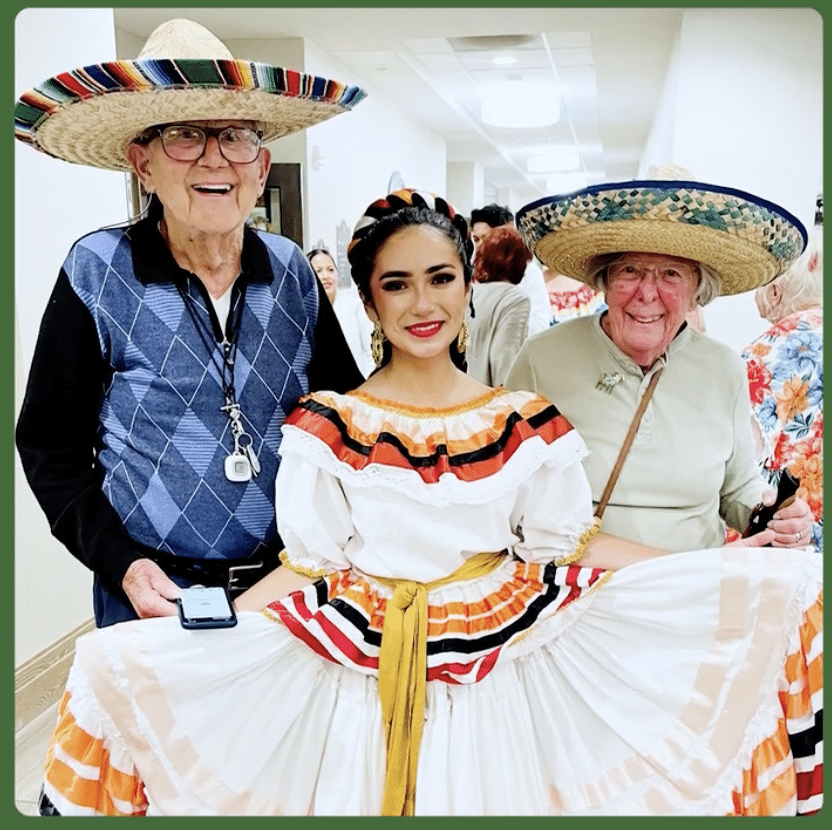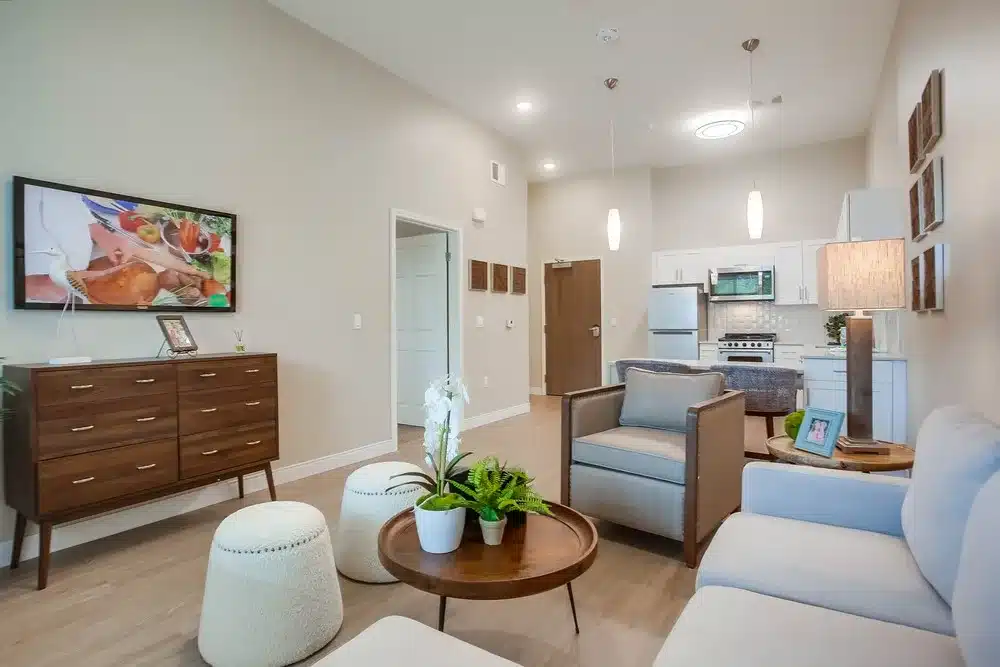Skilled Nursing Facility Speech Therapy: Key Facts and Benefits
Have you ever considered how much communication impacts your daily life? At Westmont of Encinitas, speech therapy enhances our residents’ communication, swallowing, and cognitive abilities.
With personalized interventions, individuals can experience significant improvements in their quality of life. Understanding the range of services our skilled speech-language pathologists provide is essential for appreciating this vital therapy’s full benefits.
Let’s explore how it can make a difference at Westmont of Encinitas.
How Skilled Nursing Facility Speech Therapy Supports Recovery & Quality of Life
While you or your loved one may face challenges after a medical event, skilled nursing facility speech therapy offers essential support that can greatly enhance recovery and quality of life. Speech therapists work closely with individuals to assess their unique needs, tailoring interventions to improve communication, swallowing, and cognitive skills. This personalized approach fosters physical recovery and emotional well-being, helping you regain confidence and independence. By addressing communication barriers, therapy encourages social interaction, reducing feelings of isolation. Additionally, enhancing swallowing abilities can improve nutrition and overall health. Overall, skilled nursing facility speech therapy is critical in helping you or your loved one navigate recovery, ensuring a smoother change back to daily life and enriching your overall quality of life. Personalized care plans in memory care living can serve as a valuable resource for those experiencing cognitive challenges.
Engaging SNF Speech Therapy Activities to Promote Recovery
Engaging in speech therapy activities at a skilled nursing facility (SNF) can greatly enhance your recovery journey. These activities improve communication skills, cognitive functions, and swallowing abilities. You might participate in interactive games, storytelling sessions, or role-playing exercises that make learning fun and effective. Additionally, using everyday objects for practice can help you integrate skills into real-life situations. Your speech therapist will customize activities to meet your needs, ensuring you stay motivated and engaged. Group activities also foster social interaction, which can boost your emotional well-being. By actively participating in these engaging therapies, you’ll work towards recovery and build valuable connections with staff and fellow residents, creating a supportive community for your healing process. Personalized music therapy can also complement these activities by stimulating memory recall and enriching your overall experience.
What Is a Skilled Nursing Facility? Understanding Care & Services
After engaging in speech therapy activities, it’s important to understand the broader context of care you receive at a skilled nursing facility (SNF). An SNF provides extensive medical and rehabilitative services for individuals who require more assistance than can be offered at home. Here, you’ll find a multidisciplinary team dedicated to your recovery, including skilled nurses, therapists, and support staff. They focus on your unique needs, whether you’re recovering from surgery, managing chronic conditions, or experiencing cognitive challenges. The environment promotes healing through personalized care plans and therapeutic activities to enhance your well-being. Understanding this context helps you appreciate the collaborative efforts to foster your independence and improve your quality of life. Additionally, integrating advanced healthcare technologies ensures that residents receive the highest standard of care tailored to their specific needs.
What Do SLPs Do in a Skilled Nursing Facility? Roles & Responsibilities
In a skilled nursing facility, speech-language pathologists (SLPs) play an essential role in helping residents regain communication skills and improve their swallowing abilities. SLPs conduct thorough assessments to identify individual needs, develop personalized treatment plans, and implement targeted therapy sessions. They work closely with residents to enhance articulation, language comprehension, and cognitive communication skills. Additionally, SLPs collaborate with nursing staff and caregivers to guarantee extensive support, providing education on communication strategies and techniques. They also track progress, adjusting therapeutic approaches as needed to maximize outcomes. By fostering an environment of empathy and understanding, SLPs significantly contribute to residents’ quality of life, empowering them to express their needs and participate fully in their care. Furthermore, SLPs often incorporate health and wellness programs into their therapy plans to promote overall well-being among residents.
Recognizing & Treating Dysphagia in Skilled Nursing Facilities
Recognizing and treating dysphagia in skilled nursing facilities is vital for guaranteeing residents’ safety and well-being, as swallowing difficulties can lead to serious health complications. You’ll want to observe residents for signs of dysphagia, such as coughing during meals, difficulty chewing, or a change in voice quality. Prompt identification allows for timely intervention, including dietary modifications and specialized swallowing techniques. Collaborating with speech-language pathologists is essential as they assess and develop individualized treatment plans. Providing staff with training on dysphagia management guarantees everyone is equipped to support residents effectively. By prioritizing these measures, you create a safer environment where residents can enjoy meals without fear and maintain their quality of life.

The Importance of Speech Therapy in Skilled Nursing Facilities
While many may overlook speech therapy’s role in skilled nursing facilities, it enhances residents’ communication and swallowing abilities. Effective speech therapy addresses speech disorders and plays a vital role in improving cognitive functions and social interactions. By actively engaging with residents, you help them regain their confidence, fostering a sense of independence. This therapy can also prevent complications, such as aspiration pneumonia, which is critical for maintaining overall health. Personalized speech therapy programs can also be tailored to each resident’s needs, ensuring the best progress. By prioritizing speech therapy, you’re not just enhancing communication skills; you’re enriching lives, helping residents connect with their loved ones, and improving their quality of life.
In the nurturing environment of Westmont of Encinitas, a skilled nursing facility, speech therapy shines as a beacon of hope for those facing communication and swallowing challenges. By embracing tailored interventions, you’re not just recovering skills; you’re rediscovering connections and enhancing your quality of life. The dedicated efforts of our speech-language pathologists guarantee that every step you take is filled with purpose and support, fostering physical healing and emotional resilience. It’s a journey towards regaining your voice and thriving once again. For more information, please call us at 760-452-6037.
Frequently Asked Questions About Speech-Language Pathologists (SLPs) and Skilled Nursing Facilities
What does an SLP do in a skilled nursing facility?
A Speech-Language Pathologist (SLP) in a skilled nursing facility (SNF) evaluates and treats residents with speech, language, cognitive, and swallowing disorders. They work with individuals recovering from strokes, neurological conditions, or other illnesses that affect communication and swallowing abilities. SLPs develop personalized therapy plans to improve speech clarity, memory, problem-solving skills, and safe swallowing techniques. They also collaborate with nurses, doctors, and other therapists to enhance residents’ overall quality of life and independence.
What can I expect from a skilled nursing facility?
A skilled nursing facility (SNF) provides 24/7 medical care and rehabilitation services for individuals recovering from surgery, illness, or chronic conditions. You can expect professional nursing care, physical and occupational therapy, speech therapy, and assistance with daily activities. These facilities focus on improving patients’ functional abilities to help them regain independence or transition to long-term care if needed. Additionally, SNFs often offer social activities, meal services, and specialized care for conditions such as dementia.
Who gets paid more, a nurse or an SLP?
Salaries for nurses and Speech-Language Pathologists (SLPs) vary based on experience, location, and work setting. On average, SLPs tend to have a higher median salary than registered nurses (RNs), though advanced practice nurses (such as Nurse Practitioners) may earn more. SLPs typically require a master’s degree and certification, while RNs can start with an associate or bachelor’s degree in nursing. Ultimately, both careers offer competitive salaries and job stability, with opportunities for growth in specialized areas.
What do SLPs do in a hospital setting?
In a hospital setting, Speech-Language Pathologists (SLPs) assess and treat patients with speech, language, cognitive, and swallowing disorders. They work with individuals recovering from strokes, traumatic brain injuries, or neurological diseases that impact communication and swallowing. SLPs conduct bedside evaluations, provide therapy for speech and cognitive rehabilitation, and recommend dietary modifications for safe eating. They collaborate with physicians, nurses, and other healthcare professionals to support patient recovery and improve quality of life.






















